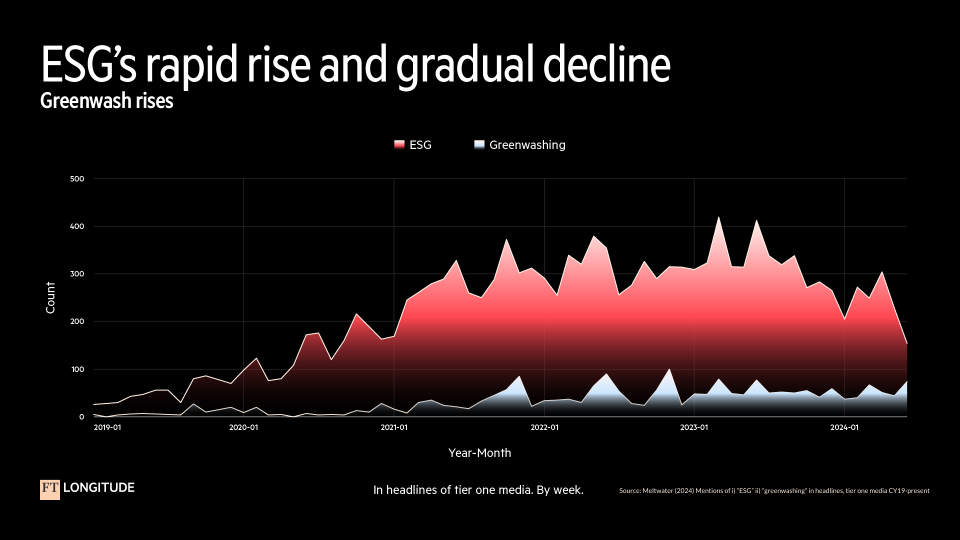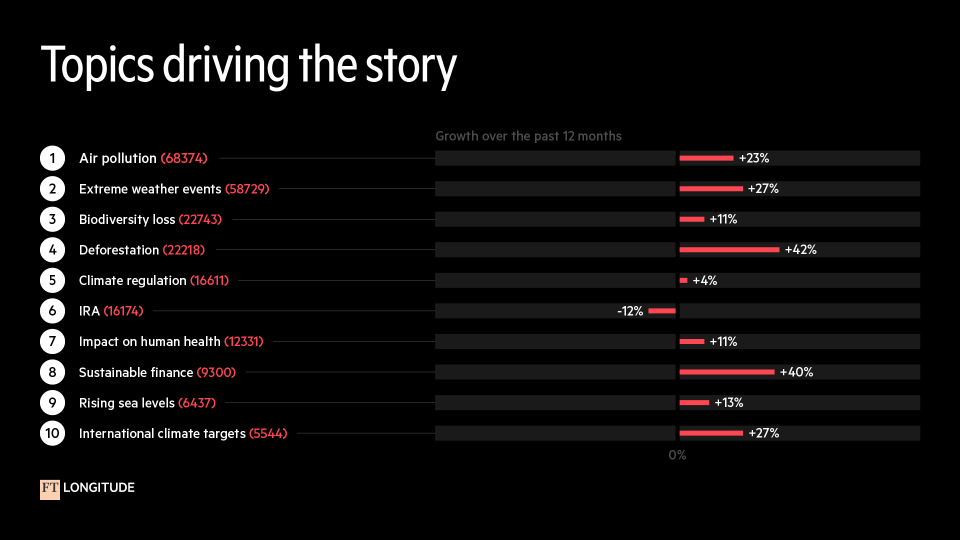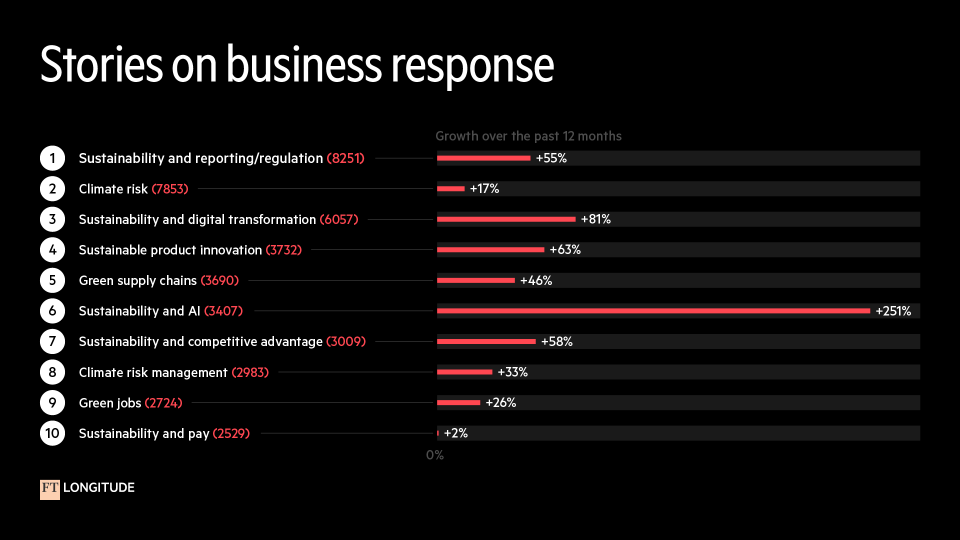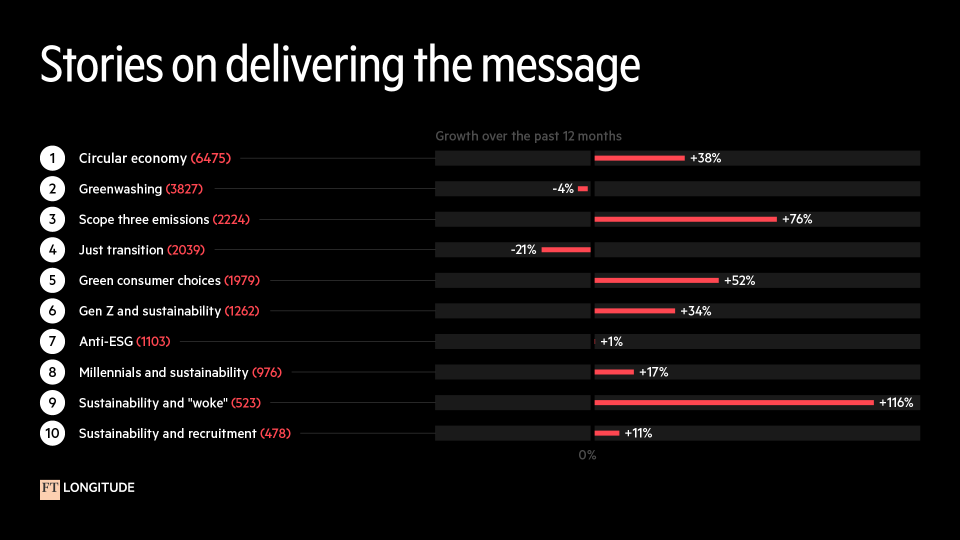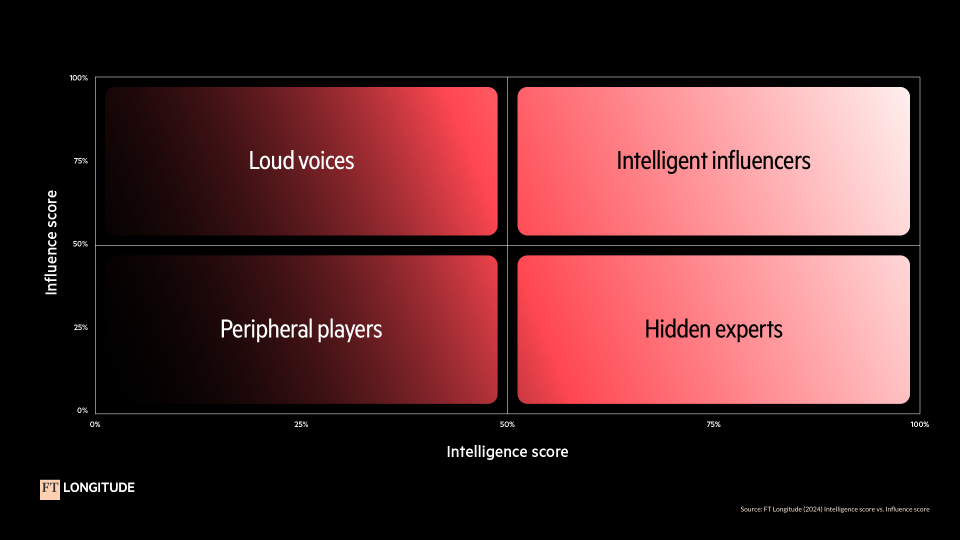Sustainability thought leadership trends
Hard on the heels of our recent AI and thought leadership seminar comes our next thematic deep-dive. This time we’re turning the spotlight on the evolving landscape of sustainability, focusing on its integration into core business strategies, the backlash against greenwashing, and effective audience engagement. This article synthesises our insights and highlights from our latest quadrant analysis. With this we outline several important recommendations for marketers and communications leaders on establishing authentic sustainability narratives for their brand.
The evolution of sustainability: From CSR to core strategy
Sustainability in business has come a long way since the 1950s when the idea of corporate social responsibility (CSR) first appeared.
By 1994, John Elkington introduced the “triple bottom line,” which highlighted the importance of economic, social, and environmental value. In the early 2000s, ESG (Environmental, Social, and Governance) criteria started gaining attention with the UN’s “Who Cares Wins” report.
Lately, though, the media has been calling out the misuse of ESG terms and the rise of greenwashing, damaging its credibility.
The rise of greenwashing and ESG backlash
The increasing complexity of sustainability reporting and the proliferation of acronyms have led to confusion and scepticism. Media coverage has spotlighted these issues, with a noticeable decline in positive ESG mentions and a rise in greenwashing stories.
This trend shows a broader scepticism in the media, with journalists pointing out the gap between what companies say about their sustainability efforts and what they actually do.
Media trends and audience engagement
At our latest event, we identified key media trends sparking sustainability coverage.
The top topics include extreme weather events, air pollution, biodiversity loss, and missed international climate targets. These issues reflect a growing public and media interest in tangible environmental impacts and corporate accountability.
Businesses are stepping up by creating innovative products and embracing digital transformation, making sustainability a key part of their strategies. AI is also becoming a big player in supporting sustainability goals, highlighting both the exciting possibilities and the environmental challenges of new technology.
Communicating sustainability: Strategies for authentic engagement
So how should brands respond to these changes? Effective communication of sustainability efforts is crucial. Our research highlights the importance of addressing scope three emissions, carbon leakage, and the role of sustainability in consumer choices. So companies need to convey their efforts transparently, avoiding jargon and focusing on clear, authentic narratives. That’s why true thought leadership can make all the difference.
Thought leadership in sustainability
Our “Intelligence x Influence” framework evaluates thought leadership campaigns across a range of themes and topics, assessing campaigns based on data credibility, expert voices, creative execution, and overall impact. It combines two factors that correlate to gauge a campaign’s success:
- Influence score: Measures brand awareness and media reach. Campaigns like Deloitte’s CXO study and McKinsey’s Global Energy Perspectives scored highly due to their broad media coverage and engagement.
- Intelligence score: Evaluates the depth of analysis and data integration. Successful campaigns combined survey data with proprietary insights, offering detailed, interactive content for their audiences.
Leading sustainability campaigns
Several campaigns stood out for their effectiveness:
- Deloitte’s CXO Study: Focused on C-suite executives, combining targeted messaging with comprehensive data analysis.
- McKinsey’s Global Energy Perspectives: Offered wide-ranging insights into energy trends, supported by detailed data.
- PwC’s Net Zero Economy Index: Highlighted multi-annual commitments to sustainability, emphasising long-term investment in thought leadership.
Top qualities of successful campaigns
Our analysis revealed three common attributes among successful sustainability campaigns:
- Depth of data: Combining multiple data sources to provide comprehensive insights.
- Information design: Utilising a variety of visualisations to maintain engagement.
- Credibility: Featuring voices from within and outside the organisation, including potentially critical perspectives, to build trust.
Challenger brands and targeted campaigns
Smaller brands also made an impact by focusing on niche areas of sustainability. Here are two that got our attention and why:
- Newton’s Re-energising offshore wind: Targeted UK energy policy, influencing policymakers with clear action points and relevant data.
- Generation’s Sustainability Trends Report: Used diverse data sources and compelling storytelling to engage audiences without a large budget.
Key takeaways
Becoming a leader in sustainability demands authenticity, transparency, and a long-term vision. By harnessing credible data, crafting compelling stories, and communicating clearly, we believe brands can navigate the complex landscape of sustainability and make a meaningful impact.
Watch the full session – A sustainable story: How to avoid the green backlash and make a positive impact – including more sharp insight from our specialist editors and industry leaders on demand here.
Ready to embark on your sustainability thought leadership mission? We’ll help you to navigate and overcome any challenges you currently face in creating differentiated thought leadership and learn how to get more out of your content campaigns.
Get your brand on the map
If you’re interested in talking to one of our strategy experts to help determine how you can stand out in the crowded thought leadership market of sustainability, get in touch and one of the team will be in touch.
- Help your company find its unique position on sustainability
- Benchmark your current content against top performing sustainability campaigns
- Learn best practice on how to tell stories and engage your audience
Sign up to the newsletter
We help organisations stand out, speak with authority and spark inspiration, so change can happen. That’s real intelligence with influence. Sign up to our newsletter to get regular updates.
Subscribe






 Back
Back

 Book a meeting
Book a meeting
 Book a meeting
Book a meeting


